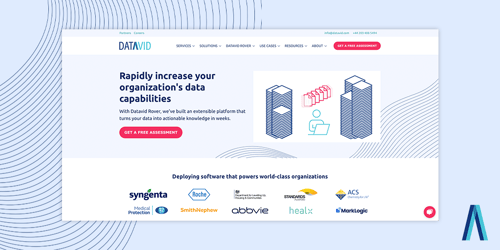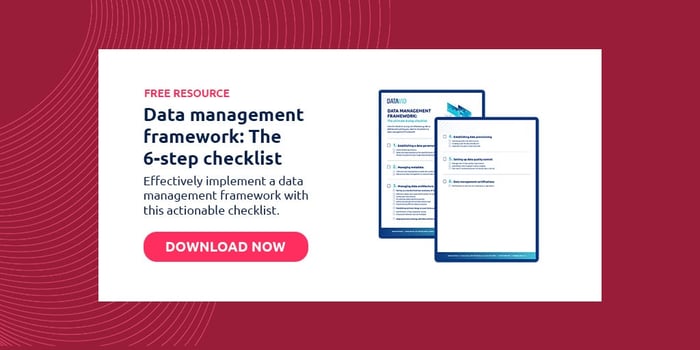4 minute read
Understanding real time data ingestion: A simple guide
What does real time data ingestion mean? And what are the benefits for your company? Here's all you need to know.
Table of contents
Real-time (or “streaming”) data ingestion helps operational leaders make decisions in time-sensitive environments, such as compliance monitoring. It enables advanced analytical and transactional processes.
If running your business through a rear-view mirror sounds familiar, real-time data ingestion is a topic of interest.
Overnight batch processing of data should be a relic of the past, but even without overnight processes, data latency (or data “staleness”) can hold your business back.
Types of data ingestion
There are 3 types of data ingestion:
- Batch – The most common and least resource-intensive
- Real-time (or “streaming”) – Appropriate for specific use cases
- Lambda – A mix of both batch and real-time data ingestion
Batch ingestion is often (but not always) associated with ETL (Extract, Transform, Load) pipelines, where you set specific extraction requirements on a regular schedule.
(That could be hourly, daily or weekly.)
Periodic refreshes, centered on periods of low system use, allow for efficient use of IT resources—but it can be in increasing conflict with the needs of the business.
Accurate, timely information is essential for lean organisations.
And that’s where real-time data ingestion comes in.
What does “real-time” data ingestion mean?
“Real-time” is a colloquial term for streaming data, meaning data that is continuously being integrated across many sources at the same time, usually in small sizes.

To ingest data so that it’s quickly available for analysis, each stream needs to be processed incrementally—record by record—and then stored in its final format.
Whereas batch ingestion updates data at longer periodic intervals, real-time data ingestion is a continuous process that is constantly monitored for changes.
This begs the question:
“Why make an investment in such a resource-intensive process?”
The answer lies in the scale at which you operate as well as the domain.
Some uses start as simple internal analytics, but they can evolve into high-value experiences such as delivery tracking, available to promise, credit scoring & more.
Two examples of business scenarios for real-time ingestion
To understand how your business can benefit from processing data in real-time, here are 2 examples for the automotive and financial industries.
Example #1: Real-time analytics for the automotive industry
“You can’t improve what you don’t measure.”
That’s how the saying goes.
This is rarely truer than in the automotive industry, where incremental improvements make the difference between staying relevant and losing ground.
Real-time data ingestion presents a lot of opportunities here:
- Monitor vehicle condition in real time
- Manage manufacturing processes and quality in real-time
- Get a global date view of parts availability across the supply chain
Some of these benefits are internal, but some directly impact the customer experience.
For instance, real-time monitoring of vehicles can notify customers of problems that are not yet apparent.
This gives the chance for intervention ahead of a potential failure.
Thanks to the constant data stream, operational leaders can make decisions faster, more accurately, and with less technical overhead.
Example #2: Compliance monitoring for financial companies
Financial firms are increasingly regulated. Demonstrating to external auditors that transactions are compliant is fundamental.
What if potential compliance issues could be identified in real-time before the business commits to what may be a potentially illegal transaction?
Some of the most pressing questions in this domain are:
- How do I spot unusually high trading activity quickly and accurately?
- Can I tie the suspicious trading activity to real-world events happening right now?
- How do I get an up-to-date view of all the data pertinent to a transaction?
- What are the precise time stamps and sequence of events of a trade?
- Can I monitor time stamps across multiple data sources?
These aren’t easy questions to answer.
A person would never be able to handle tasks like these on their own without at least a few days’ worth of meticulous research.
With real-time data ingestion, a monitoring system can notify your firm of suspicious activity almost instantly, drawing attention to specific market actors within the hour.
Should you invest in real-time data ingestion?
The technical details behind real-time data ingestion are vast and complex: message brokers, schema validation, database change events, and more.
But the benefits are also tangible.
If your company deals with time-critical data and could benefit from real-time analysis to drive operational decisions, it’s definitely worth a look.

Companies like Datavid champion the idea that your data should do more than just sit in a department-specific database for years.
That’s why we’ve built Datavid Rover, which allows for an easy entrance into data ingestion, processing, and analysis with none of the technical overhead (and a headache!).
With streaming data processed continuously, you can solve domain-specific problems while reducing the resources spent on manual research.
So, should you invest in it?
That’s up to you!
However, it’s clear that the world is moving toward real-time, both from a consumer and a business perspective.
Leveraging it early will give you an edge in your industry.
Frequently Asked Questions
What is real-time data ingestion?
Real-time (or “streaming”) data ingestion is the continuous integration and processing of data across multiple sources toward a target destination. In real-time data ingestion, each “stream” needs to be processed incrementally—record by record—and then stored in its final format.
How do you manage real-time data?
Managing real-time data requires a streaming-first approach rather than a batch-processing approach, which is the most common way of ingesting data. Every stream of data represents a small quantity of information to carry over, and the information is processed on a continuous basis.
What are some real-time data ingestion tools?
An example of a real-time data ingestion tool is MarkLogic; multi-model databases that allow you to integrate and process data continuously from multiple sources at the same time. MarkLogic also offers a data hub to build applications on top of, enabling use cases such as real-time analytics.
Are data ingestion and ETL different?
Yes. Data ingestion is a process that can be undertaken in 3 different ways: 1) Batch; 2) Streaming, and; 3) Lamba (a mix of the first two). On the other hand, ETL (Extract, Transform, Load) is a data integration framework that is most commonly (but not necessarily) associated with batch data ingestion.




